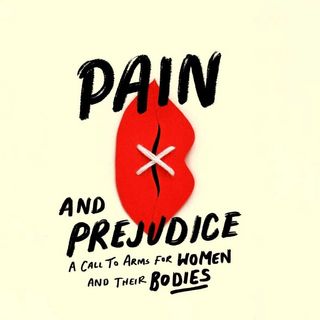
Everything You Need to Know About Hair‑Oiling, According to Ayurveda
Turns out, coconut oil isn’t the solution to everything.

The South Asian secret to long, shiny hair has long been out; hair-oiling or “deep conditioning” treatments are now a staple at hair salons, studios, spas and labs across the world. In the process, however, the Ayurvedic practice of hair-oiling has suffered the same fate as turmeric — in that it’s become somewhat of a trend for time-honored ingredients used in Asian culture to be imported, mass-manufactured and pushed as the West’s shiny new superfood/Elixir of Youth from the East. The more Ayurvedic-sounding, the better.
But Ayurveda and the free-market are inherently at odds. The way hair-oils are currently manufactured, mixed, advertized and used simply cannot lead to the many benefits of hair-oiling guaranteed in Ayurveda, now proven by science and accepted by the beauty industry, at large. There’s a method, prescribed to achieve those benefits, that needs to be followed. This is not to say one must sit and extract neem oil from leaves on the weekend for the sake of healthier hair, but the solution isn’t to put a processed mixture of coconut, lavender and jojoba oil that came in a shiny bottle in one’s scalp either.
So, here’s a the-best-you-can-do-in-2020 guide to hair-oiling, following the ‘science’ of the Ayurvedic practice as closely as possible — should you decide to incorporate it into your self-care routine.
A crash-course in hair oiling
According to Ayurveda, there are three doshas (life-giving energies) that flow through all humans — Vata, Pitta, and Kapha. An excess of any one of them throws the entire body’s functioning off-balance, but its consequences can especially be seen by the way it affects our hair.
The scalp, in Ayurveda, is composed of multiple energy-relieving points called marmas. Hair-oiling, then, is seen as a rejuvenation tool — oiling the scalp helps extract any excess doshas that accumulate in the head, the seat of all decision-making, thinking and stress — thereby restoring balance.
Once the balance is restored, the negative effects of a dosha being in excess we all deal with, such as premature greying, hair fall, coarse hair, and dandruff — automatically resolve themselves.
Apart from rejuvenation, hair-oiling according to Ayurveda has the added advantages of strengthening hair-roots and nourishing hair-shafts, promoting new hair growth, softening and conditioning the hair, protecting the hair from the harsh effects of the sun, and enhancing blood circulation in the head and neck area, relieving the “tightness” felt from stress.
When and how should you oil your hair?
Ayurveda suggests oiling your hair once a week, and hence, washing your hair once a week. In case your hair is exceptionally dry or has a lot of dandruff, you can benefit from hair-oiling twice or thrice a week, but no more.
The best, easy-to-achieve method of hair-oiling is: take lukewarm (not hot) oil in a small bowl, dip fingertips in the oil while parting the hair at the top of the head with the other hand, and apply the oil to the scalp. Then, part the hair in an adjacent location and apply oil, and repeat this process until you have oiled your entire head. Massage only a little oil along the length of the hair. (Too much can heavily coat the hair in oil leading to dust and dirt sticking to it.) In the end, lightly massage the scalp with small, circular motions to stimulate blood circulation and to encourage the oil to absorb, thereby cooling down the head and releasing the excess doshas.
Related on The Swaddle:
The Shame and Scandal of Indian Women’s Hair Follicles
Ayurveda suggests doing this process at night, leaving the oil in overnight, and washing it the next morning with lukewarm water with a gentle shampoo. A head massage with oil an hour before sleeping can also improve the quality of the sleep that follows.
Oiling hair after having a bath is not advisable for the same reason that it might attract dust when you step out in the sun, but if you’re at home, no more than a teaspoon of oil directly applied to the roots should do the trick.
To get rid of a headache, massaging the scalp with oil around 6 PM is ideal since headaches are associated with an excess of Vata dosha which is considered to dominate the human body this time of the day. This can be followed by a wash after an hour of letting the oil soak in, or left overnight for a wash the following morning.
What oils work well on hair?
The first step to selecting hair-oil is understanding what kind of hair you have, according to your ayurvedic constitution.
People with thin, prone to split-ends and frizzy have Vata-dominant hair. Those with fine hair prone to thinning (hair loss) or premature greying have Pitta-dominant hair, while those with thick or oily hair have Kapha-dominant hair.
The second step is hunting down the most organic form of the right oil money and access allow. Chemicals in mass-manufactured oils and even deep-conditioning ‘hair masks’ are violently at odds with the oils Ayurveda suggests, the original texts prescribing hand-plucked hair-friendly herbs, crushed fresh and applied immediately. Since that’s close to impossible in our busy lives in this urbanized world in 2020, look for chemical-free, 100% virgin oils. They may cost a pretty penny, but accounting for the hair-damage you’ll prevent and how long the oil will last (you’re not supposed to use more than three-four tablespoons in one go), it’s worth it.
If you have Vata-dominant hair, almond oil or sesame oil can be very nourishing for the hair and helps reduce stiffness in the scalp. If you are Pitta-dominant, coconut oil is the ideal choice due to coconut’s pitta-pacifying properties; argan oil is a close-enough substitute. If you are Kapha-dominant, sesame or olive oil are your best bet. If it’s dandruff you’re battling, a bi-weekly oil-and-wash session with neem oil can do wonders.
For best results though, it is important to remember that Ayurveda is a holistic way of life. Regular hair-oiling, in conjunction with incorporating time-tested herbs such as amalaki (Emblica Officinalis) and bhringraj(Eclipta Alba) and substances such as ghee, honey, almond milk and ginger tea in your diet — is likely your best bet at reaping the Ayurvedic benefits of hair-oiling.
Pallavi Prasad is The Swaddle's Features Editor. When she isn't fighting for gender justice and being righteous, you can find her dabbling in street and sports photography, reading philosophy, drowning in green tea, and procrastinating on doing the dishes.
Related


Everything You Need to Know About That Vague but Heavy Feeling of Stress
